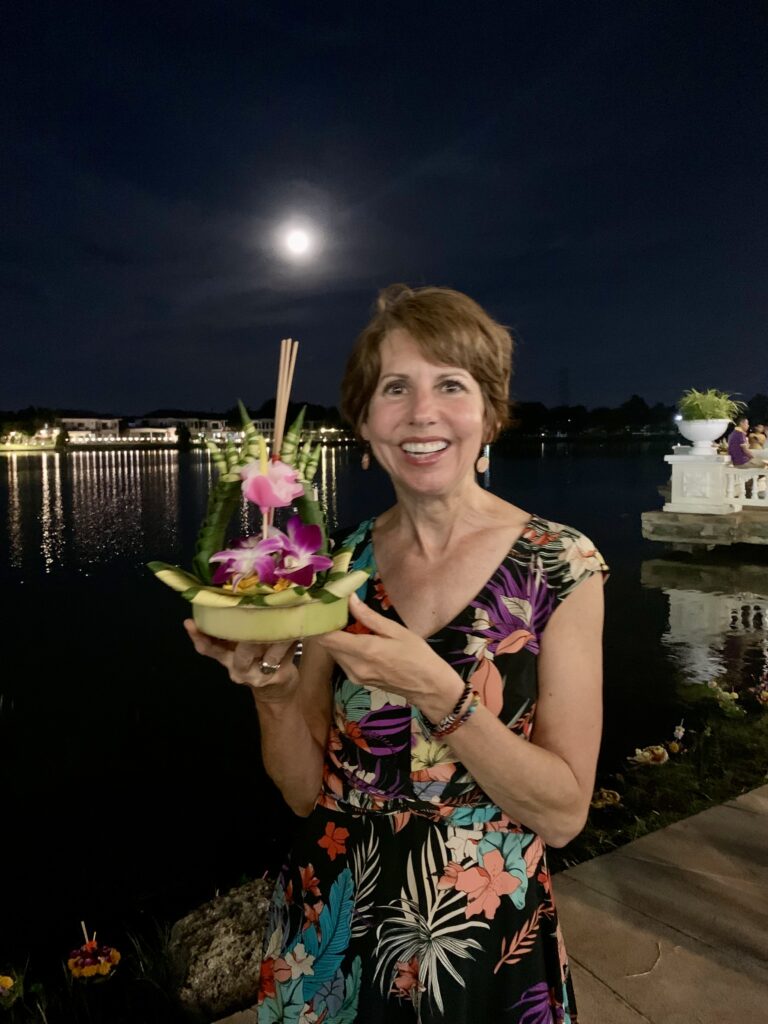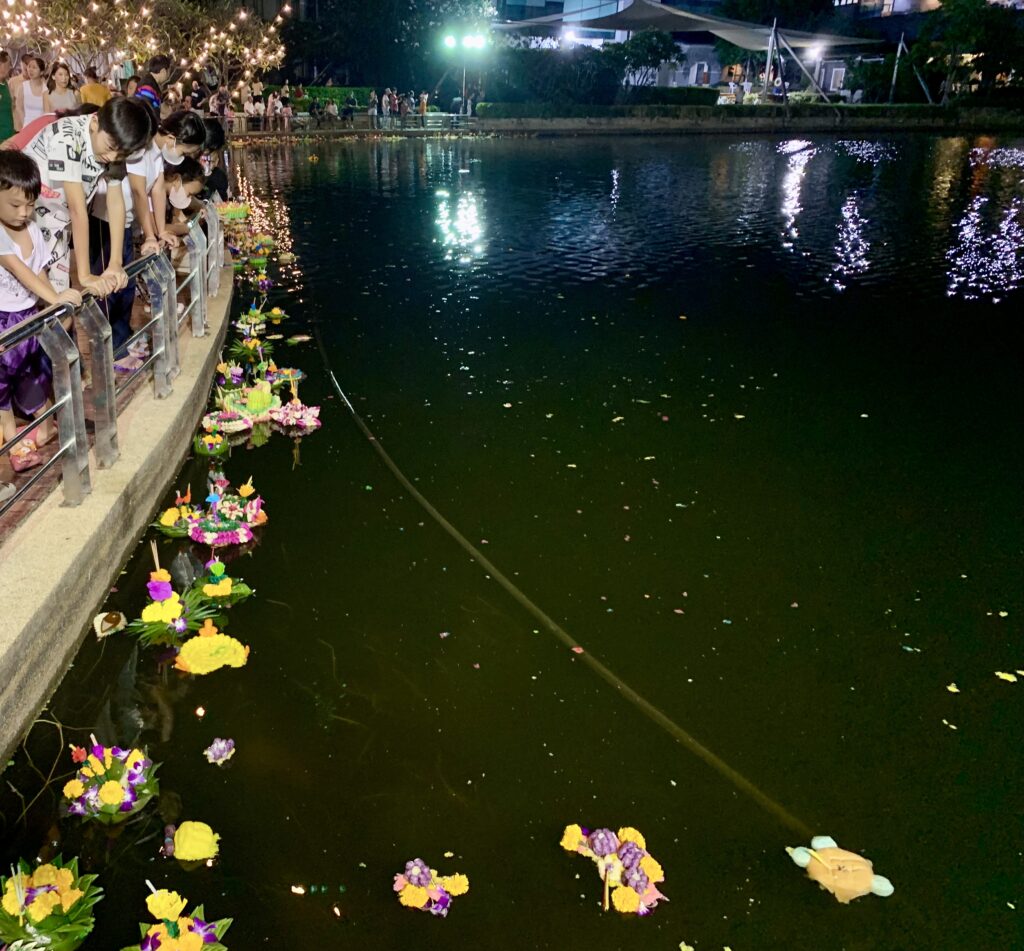Over the years, I’ve learned mindfulness techniques to help quiet my anxious mind. One involves putting intrusive thoughts into imaginary little boats that float away down a river, allowing me to focus on my breath and find peace. Naturally, I couldn’t resist participating in Thailand’s Loy Krathong festival, which takes that practice and makes it real. Thai people drop actual little boats into the water to both cast off negative energy and send gratitude to various water gods.
The festival takes place in the 12th month of the Thai lunar calendar on a night with a full moon, which was Monday of this week. Opportunities abounded throughout Bangkok, a city criss-crossed with large and small waterways. I opted to visit the Perfect Place lake, just minutes from my house.
My friend, Melissa, and I scootered to our neighborhood’s festival, where food vendors lined the street next to the small lake. Thai families had spread out picnic blankets, and children ran around playing the myriad games on offer. Many festival-goers dressed in traditional Thai clothing of brightly colored silk. Twinkly lights illuminated the lakefront, and speakers played upbeat music. The vibe was joyful and celebratory.
Loy means “to float,” and a krathong is a small, floating religious offering. Several booths offered krathongs, including some made from fish food and others crafted from natural materials. Artisans created krathongs on site, weaving banana leaves and pinning them to a base made from a slice of banana tree trunk before adding flowers, candles, and incense sticks.
Melissa and I bought banana leaf krathongs and wandered along the lakefront to find a good place for setting sail. We greeted many friends, colleagues, and students, who were clearly enjoying the special event and cool evening temperatures.
Finally, we met up with another friend, Jane, whose husband had thought to bring a lighter. Together we knelt on the pavement, lit our candles and incense sticks, and bent down to drop our krathongs in the lake. Melissa’s promptly tipped over, which gave us a good laugh. Jane’s and mine stayed upright, but they didn’t really go anywhere.
Ideally, you would lower your krathong into the water, and it would float away dramatically into the distance until it disappeared from sight. Unfortunately, the gentle breeze at our community lake pushed all the krathongs right back to the shore, so the effect was rather anticlimactic.
The whole time, I was having flashbacks to my first Loy Krathong. While living in Laos 13 years ago, I joined some friends for Vientiane’s celebration, called Loi Ka Thong. Same basic premise, but yowza, what a different experience. Check it out.
There’s a growing controversy over whether this festival should continue as is. It’s a bit ironic to offer blessings to the river gods and ask forgiveness for acts that pollute the water while at the same time clogging waterways with garbage. Even though most of the krathongs feature biodegradable materials these days, there are simply too many. According to the Thailand Foundation website:
As concerns about environmental conservation rise, many became aware problems posed by certain aspects of the festival. Namely, the over-floating of krathongs in certain area can, ironically, lead to polluting issues. Though the organic materials used to make krathongs can decompose naturally, oversaturation can cause problems such as stench and rot. Cleaning up after the festival is a laborious task undertaken by the government and communities living around water ways each year.
As an eco-warrior, I’m torn. I strongly advocate reducing our consumption in general, but I can’t deny the power of this lovely celebration. I’ve read about some creative solutions such as digital krathongs controlled by a smart phone and projected on the water. However, tradition dies hard. I’m curious to see how Thailand addresses this issue in the future.


